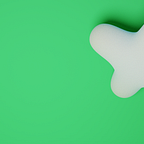An Opening to An X: The Start of My Theories in Design and Philosophy
As I’m writing down this first line, I want to invite both me and my audience who are concerned with my journey in design and philosophy to an opening of a playground, i.e. this very blog.
Working and studying in the field of human-computer interaction for almost a decade, with my first internship leading my way to it since 2015, I’ve been involved in various projects of both design doing and design thinking in different fields, that is, financial technology, enterprise products in information technology, IoT, smart home, ubiquitous computing, VR/AR, data visualization, data management, and different theories as well as frameworks such as feminism HCI, humanism & post-humanism HCI, critical theories in HCI, post-structuralism, design strategy, identity theory, inclusive design etc. as an HCI researcher, visual designer, and interaction/experience designer. By opening this publication on Medium, I’d love to link my past work, especially my writings in design and research methodologies, design thinking as well as projects in philosophy in general integrating design practices with well-established philosophical, psychological, and sociological frameworks, critiques, and theories.
A list of prospective topics and subject matters that I’d cover in my publication include:
Design ontology:
- What is design? What does design include?
- What subject matters do design deal with?
- What is experience? What is interaction?
- Why does one say design deal with the matter of desirability? What is desirability?
- What are the relations between design and other fields of study, e.g. science, engineering, business strategy, marketing, economics, politics, sociology, psychology, etc.?
- What is technology?
- What is user?
- What is user mental model?
- What are different frameworks for the understanding of users? What is design culture and design culture maturity?
- etc.
Design ethics:
- What is good a good and bad design?
- How do we critique a design through an ethical lens?
- etc.
Design epistemology and methodologies
- How does one design?
- What are different methodologies in design?
- How will a designer implement certain design practices in a design project and why is it chosen?
- What is design research data?
- What is design insights?
- How do we reach design insights? How do we make design decision with research data and insights?
- etc.
Frameworks and theories in HCI/design and philosophy
- What is feminism and what is feminism HCI? Judith Butler, Monique Wittig, Simon de Beauvoir and gender in computerization
- What is participatory design?
- What is critical theories in HCI?
- What are humanism and post-humanism HCI?
- How does post-structuralism and existentialism relate to design?
- Empiricism, Rationalism, Kant’s critique of pure and practical reason in design reasoning and argumentation.
- Symbolic interactionism and its relation in HCI/design
- Jacques Lacan, desire, subjectivity and their relation with desirability in design
- Mihaly Csikszentimihalyi, the concept of flow, its relation to human experience and desirability
- John Dewey on reflective thinking and aesthetic theories
- etc.
This is an ongoing and incomplete list. My intention here is to set up my agenda in my writing and lay down a basic scope of both what I’ve been working with and what I internalized as my repertoire and toolkit for design, research and philosophical analysis.
I hope by starting this collection of publications, I can exhibit my system of design and research as well as philosophical thinking in a thorough and systematic manner, or at least pave the way towards it. On the other hand, I’d love to use this medium as a bridge for a symbolic-interactionist way of participatory design of my repertoire, i.e. using it as a design and research probe and invite my readers to participatorily involve in the construction of my system.
As a existentialist, I possess the belief that our existence as subjects precedes our essence. And in order to find our essence, i.e. who we essentially are, we need to go through the sufferings and joy in our existence and proactively weave what we experience into and integrated meaningful entity through real-life interaction with others. And all of this comes from a place of nothingness, i.e. there’s no predefined meaning that grants us ultimate signification of our being which precisely is the freedom given to us to take the agency to become who we are. And this is exactly why I’ve been taking a participatory stance in my practices in HCI/design -that is, treating design as the practice to conduct my existentialism project. My name, X, also stems from here, it represents the nothingness and the possibility for collaborative construction of meaning at the same time. And this publication is another step in this construction.
Thank you for reading my post and potentially my future participatory existentialst project. I hope you enjoy a good read :)
